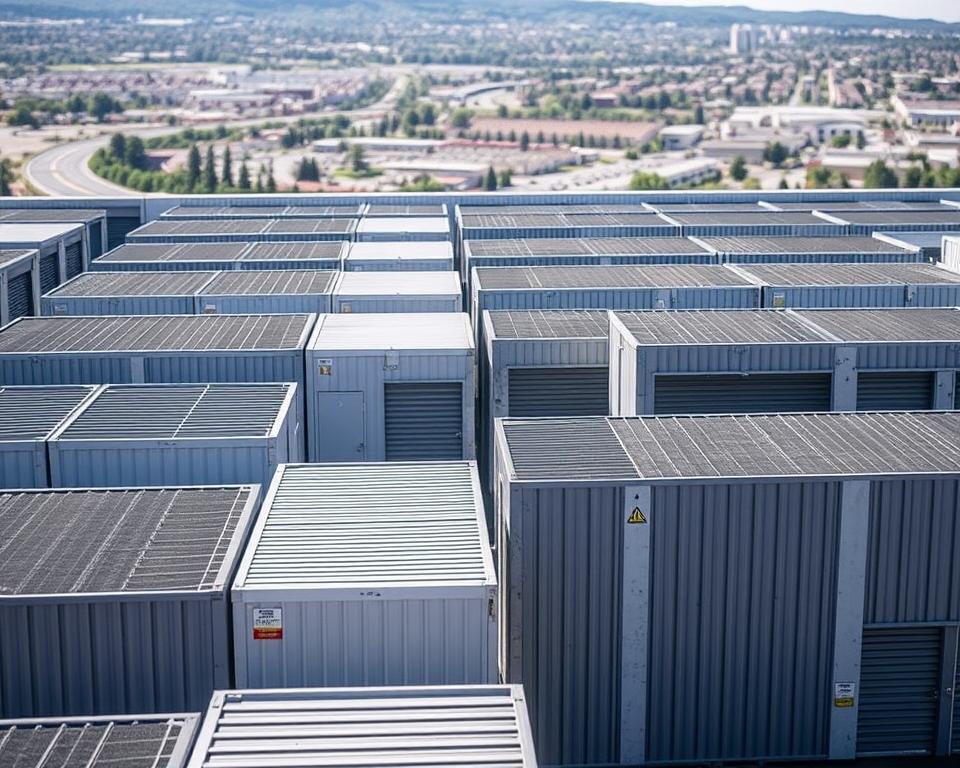Teen Guidance Services in Encinitas for Families
Are today’s teenagers truly connected, or are they quietly wrestling with issues hidden behind an online mask? The reality of adolescent mental health is complex yet vital for families to grasp. In Encinitas, specialized couple counseling Encinitas services are available to tackle the challenges young people face. This includes academic stress, behavioral issues, and feelings management struggles.
Centers like S.A.G.E. Therapy Center deliver vital teen mental health care. They concentrate on fostering emotional and social growth. Given that adolescence often marks the onset of mental health issues, it’s more important than ever to access the right counseling services for teens in Encinitas.
Main Points
- Teen counseling in Encinitas addresses teen mental health requirements.
- Understanding the unique challenges teens face is essential for effective support.
- Institutions like S.A.G.E. Therapy Center are instrumental in offering personalized teen mental health services in Encinitas.
- Counseling availability for teens in Encinitas is fundamental for averting chronic mental health problems.
- Empowering families with knowledge is key to navigating the adolescent mental health landscape.
Comprehending Teen Therapy
Teen counseling is a vital part of adolescent therapy in Encinitas, focusing on the emotional and psychological needs of 12 to 17-year-olds. It tackles issues such as school pressure, family disputes, and social fears. Counselors employ various methods, including verbal therapy and behavioral methods, to create a supportive space for self-expression.
Research shows nearly 20% of teens experience diagnosable mental health conditions. This underscores the urgent requirement for available counseling options. Through open discussions, counselors enable teens to express their feelings and tackle their issues head-on. Places like S.A.G.E. Therapy Center use proven methods to teach adolescents effective stress and emotional management strategies.

Significance of Teen Mental Health Care
Providing mental health support to teens in Encinitas is essential through big emotional and social transitions. Adolescence is filled with challenges, yet many young people face these without the support they need. Issues like low mood, anxiety, and behavioral struggles can greatly affect their daily lives.
Statistics reveal that about 11% of adolescents experience a major depressive episode within a year. These numbers stress the necessity of strong teen mental health services in Encinitas. Counseling services for teens in Encinitas enable parents and guardians to offer their children the necessary assistance to navigate these difficult years.
Seeking professional help is essential for fostering emotional well-being. Counseling tackles current issues and equips teens with lifelong coping skills. Organizations like S.A.G.E. Therapy Center offer vital resources that empower young individuals to better manage their feelings and experiences.
In a supportive environment, teenagers can share their fears, anxieties, and daily struggles. This network is indispensable for their progress into assured adulthood. Emphasizing mental health helps young people prosper both socially and emotionally as they mature.
Local Teen Counseling in Encinitas
Throughout Encinitas, multiple centers present teen counseling adapted to the region’s youth. S.A.G.E. Therapy Center stands out, with a team experienced in addressing various adolescent concerns.
The organization supplies bespoke services for adolescents facing social worries, domestic struggles, and traumatic experiences. They apply research-validated techniques to guarantee their help works. This empowers teens to establish a robust base for self-development and emotional toughness.
Teen counseling in Encinitas extends past one-on-one therapy and frequently includes relatives. Such a model invites multiple viewpoints, fostering improved dialogue and empathy among relatives.
| Service | Description | Target Issues |
|---|---|---|
| Individual Counseling | Private meetings addressing each teen’s unique hurdles. | Social worry, low mood, emotional turmoil |
| Family Counseling | Involves family members to improve communication and resolve conflicts. | Domestic tension, bond problems |
| Group Therapy | Provides a safe environment for teens to connect and share experiences. | Group influence, intimidation, self-worth concerns |
Utilizing nearby services is crucial for teens encountering emotional struggles. The spectrum of programs in Encinitas illustrates the necessity of suitable help throughout these pivotal years.
Youth Therapy Alternatives
Young people deal with various trials in their teen years, hence quality therapy is crucial for their health. In Encinitas, various adolescent therapy options are available, designed to meet the specific needs of troubled teens. These include CBT sessions, family systems therapy, and group therapy.
Cognitive-behavioral therapy aims to change negative thought patterns and behaviors. It equips adolescents with methods to manage worry and low mood. Family therapy brings relatives together to boost dialogue and fix disputes, fostering a nurture-filled household.
Group therapy offers teens a forum to exchange stories and reduce isolation. It lets teens bond with others in the same boat, building camaraderie and encouragement.
S.A.G.E. Therapy Center is a standout in Encinitas for its wide range of services addressing mental health issues like ADHD, anxiety, and anger management. These personalized therapies ensure troubled teens get the support they need to navigate this critical life stage.
| Therapy Type | Description | Ideal For |
|---|---|---|
| Cognitive-Behavioral Therapy (CBT) | Focuses on changing negative thought patterns | Anxiety, depression |
| Family Therapy | Enhances family communication and resolves issues | Family conflicts, relationship difficulties |
| Group Therapy | Facilitates peer interaction and support | Isolation, social skills development |
Understanding Counseling and Therapy Differences
Teen counseling in Encinitas is vital for mental health care, but is often mixed up with therapy. Each has its own purpose, contributing to a teenager’s well-being. Counseling delivers prompt direction and actionable remedies. It’s time-limited, handling particular concerns.
Therapy, on the other hand, explores deeper emotional and psychological aspects. Therapists work on longer-term goals, aiming for significant emotional growth. Youth counseling in Encinitas emphasizes coping strategies and personal development. Therapy, however, addresses root traumas and chronic mental concerns.
Centers like S.A.G.E. Therapy Center grasp these variations. They blend counseling and therapy to offer a tailored support system. This approach meets the unique needs of teenage clients.
Telehealth vs. Face-to-Face Teen Counseling
The advent of telehealth has revolutionized mental health services, giving teens a choice between online and in-person counseling. Online teen counseling in Encinitas provides an easy, available route for adolescents to seek assistance at home. It allows timing adaptability, removing obstacles like commute and locale.
Conversely, face-to-face counseling enables immediate engagement, crucial for forging a solid counselor-client bond. Many experts believe that face-to-face communication strengthens the bond between the counselor and teen. This results in improved treatment success. Youth mental health services in Encinitas underscore each option’s perks, aiding families in informed selection.
S.A.G.E. Therapy Center recognizes the value of offering virtual and on-site counseling. This strategy addresses the different demands of youth in Encinitas. It enables adolescents to pick their preferred format, guaranteeing optimal mental health care.
Counseling Services for Troubled Teens in Encinitas
Help for challenged teens in Encinitas confronts severe concerns including substance misuse, behavior struggles, and mental health conditions. It offers services designed for adolescents to tackle these challenges head-on. S.A.G.E. Therapy Center delivers targeted initiatives for teens in Encinitas. These initiatives create a secure environment for teens to grow and recover, imparting essential coping techniques.
Prompt counseling can avert lasting harm from ignored mental health conditions. This strategy helps pave a healthier path to recovery. Numerous caregivers seek teen therapy in Encinitas to aid their children in beating emotional challenges. This results in improved family bonds, school achievement, and overall life satisfaction.
Accessing Youth Mental Health Supports in Encinitas
Leveraging teen mental health services in Encinitas markedly helps adolescents dealing with emotional issues. Various organizations offer services tailored for young individuals. Peer groups are vital, letting teens discuss experiences and foster community.
Organizations such as S.A.G.E. Therapy Center connect teens with vital counseling offerings. They run learning sessions, instructing teens in coping skills and perseverance. Acute intervention offerings supply swift aid in emergencies, advocating a preventive mental health stance.
Identifying youth counseling in Encinitas entails reviewing area teen support programs. Numerous agencies conduct outreach to educate youth on mental health. This education diminishes shame, motivating more teens to pursue assistance.
Leveraging these offerings supports personal recovery and advances teen mental wellness. Engaging with available programs can significantly improve a teenager’s emotional well-being. This builds a more supportive community environment.
The Bottom Line
Quality teen counseling services in Encinitas are vital for adolescents’ mental health. As challenges grow, families must find resources that address immediate needs and build resilience. S.A.G.E. Therapy Center models this via tailored counseling, guaranteeing each teen receives fitting assistance.
Comprehending the teen counseling environment in Encinitas is critical for families. Counseling aids adolescents in beating struggles and embracing an optimistic outlook. Reliable mental health assistance creates a firm groundwork for ongoing development and steadiness.
Amid today’s complicated environment, valuing mental health is imperative. By choosing individualized counseling and tapping into resources, families can empower teen growth. This leads to a healthier, more engaged community.








